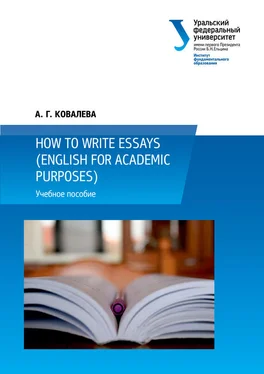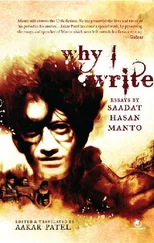Nevertheless, before you begin you need to pin down exactly the sections of each book that are relevant to your research. Very few of the books you use will you read from cover to cover. With this in mind, you need to consult the contents and index pages in order to locate those pages that deal with the questions and issues you’re interested in.
To ensure that you’re able to do ‘deep-level processing’, it may be necessary to accept that you need to do two or three readings of the text, particularly if it is technical and closely argued.
Reading for comprehension
In your first reading you might aim just for the lower ability range, for comprehension, just to understand the author’s arguments. It may be a subject you’ve never read about before, or it may include a number of unfamiliar technical terms that you need to think about carefully each time they are used.
Reading for analysis and structure
In the next reading you should be able to analyse the passage into sections and subsections, so that you can see how you’re going to organise it in your notes. If the text is not too difficult you may be able to accomplish both of these tasks (comprehension and analysis) in one reading, but always err on the cautious side, don’t rush it. Remember, now that you’ve identified just those few pages that you have to read, rather than the whole book, you can spend more time processing the ideas well.
Reading for criticism and evaluation
The third reading involves criticising and evaluating your authors’ arguments. It’s clear that in this and the second reading our processing is a lot more active. While in the second we’re analysing the passage to take out the structure, in this, the third, we’re maintaining a dialogue with the authors, through which we’re able to criticise and evaluate their arguments. To help you in this, keep the following sorts of questions in mind as you read.
• Are the arguments consistent or are they contradictory?
• Are they relevant (i.e. do the authors use arguments they know you’ll agree with, but which are not relevant to the point they’re making)?
• Do they use the same words to mean different things at different stages of the argument (what’s known as the fallacy of equivocation)?
• Are there underlying assumptions that they haven’t justified?
• Can you detect bias in the argument?
• Do they favour one side of the argument, giving little attention to the side for which they seem to have least sympathy? For example, do they give only those reasons that support their case, omitting those that don’t (the fallacy of special pleading)?
• Is the evidence they use relevant?
• Is it strong enough to support their arguments?
• Do they use untypical examples, which they know you will have to agree with, in order to support a difficult or extreme case (what’s known as the fallacy of the straw man)?
• Do they draw conclusions from statistics and examples which can’t adequately support them?
This sounds like a lot to remember, and it is, so don’t try to carry this list along with you as you read. Just remind yourself of it before you begin to criticise and evaluate the text. Having done this two or three times you will find more and more of it sticks and you won’t need reminding. Then, after you’ve finished the passage, go through the list again and check with what you can recall of the text. These are the sort of questions you will be asking in Stage 5 (Revision) about your own essay before you hand it in. So it’s a good idea to develop your skills by practising on somebody else first.
One last caution – don’t rush into this. You will have to give yourself some breathing space between the second reading and this final evaluative reading. Your mind will need sufficient time to process all the material, preferably overnight, in order for you to see the issues clearly and objectively. If you were to attempt to criticise and evaluate the author’s ideas straight after reading them for the structure, your own ideas would be so assimilated into the author’s, that you would be left with no room to criticise and assess them. You would probably find very little to disagree with the author about.
Many of the same issues resurface when we consider note-taking. As with reading, we will see that it’s important not to tie ourselves to one strategy of note-taking irrespective of the job we have to do. We will see that for different forms of processing there are the most appropriate strategies of note-taking: linear notes for analysis and structure, and pattern notes for criticism and evaluation. Cultivating flexibility in our pattern of study helps us choose the most effective strategy and, as a result, get the most out of our intellectual abilities.
But our problems in note-taking don’t end there. The best notes help us structure our own thoughts, so we can recall and use them quickly and accurately, particularly under timed conditions. In this lie many of the most common problems in note-taking, particularly the habit of taking too many notes that obscure the structure, making it difficult to recall. We will exam ways of avoiding this by creating clear uncluttered notes that help us recall even the most complex structures accurately. Given this, and the simple techniques of consolidating notes, we will see how revision for the exam can become a more manageable, less daunting task.
Finally, if our notes are going to help us recall the ideas, arguments and evidence we read, as well as help us to criticise and evaluate an author’s arguments, they must be a reflection of our own thinking. We will examine the reasons why many students find it difficult to have ideas of their own, when they read and take notes from their sources, and how this affects their concentration while they work.
As we’ve already discovered, our aim here is to identify and extract the hierarchy of ideas, a process which involves selecting and rejecting material according to its relevance and importance. Although by now this sounds obvious, it’s surprising how many students neglect it or just do it badly. As with most study skills, few of us are ever shown how best to structure our thoughts on paper. Yet there are simple systems we can all learn. Some students never get beyond the list of isolated points, devoid of all structure. Or, worse still, they rely on the endless sequence of descriptive paragraphs, in which a structure hides buried beneath a plethora of words. This makes it difficult to process ideas even at the simplest level.
Without clear structures we struggle just to recall much more than unrelated scraps of information. As a result students do less well in exams than they could have expected, all because they haven’t learnt the skills involved in organising and structuring their understanding.
They sit down to revision with a near hopeless task facing them – mounds of notes, without a structure in sight, beyond the loose list of points. This could be described as the parable of two mental filing systems. One student uses a large brown box, into which she throws all her scraps of paper without any systematic order. Then, when she’s confronted with a question in the exam, she plunges her hand deep into the box in the despairing hope that she might find something useful. Sadly, all that she’s likely to come up with is something that’s, at best, trivial or marginally relevant, but which she’s forced to make the most of, because it’s all she’s got.
On the other hand there is the student who files all of her ideas systematically into a mental filing cabinet, knowing that, when she’s presented with a question, she can retrieve from her mind a structure of interlinked relevant arguments backed by quotations and evidence, from which she can develop her ideas confidently. And most of us are quite capable of doing this with considerable skill, if only we know how to.
Читать дальше











